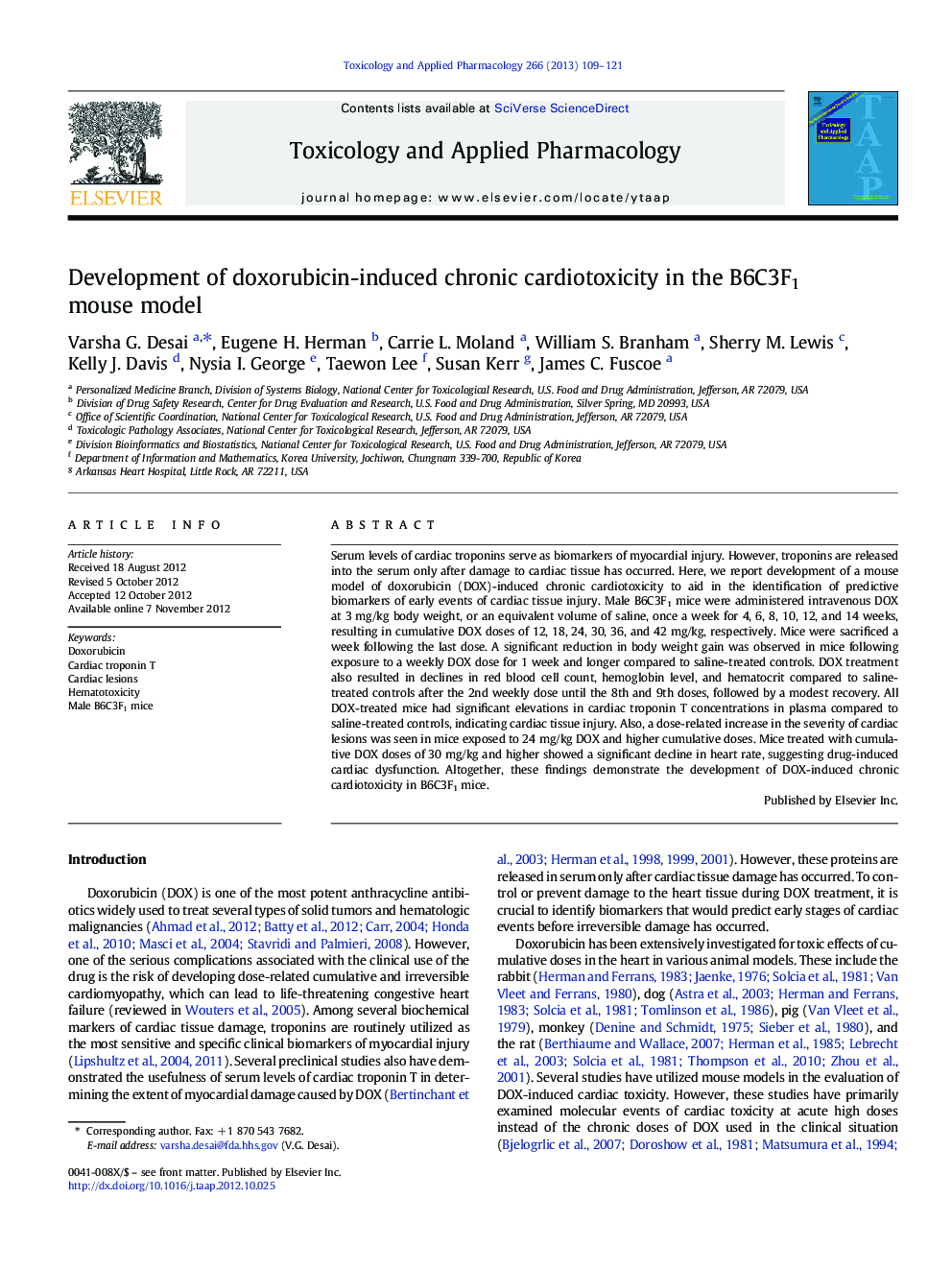| کد مقاله | کد نشریه | سال انتشار | مقاله انگلیسی | نسخه تمام متن |
|---|---|---|---|---|
| 2568915 | 1128497 | 2013 | 13 صفحه PDF | دانلود رایگان |

Serum levels of cardiac troponins serve as biomarkers of myocardial injury. However, troponins are released into the serum only after damage to cardiac tissue has occurred. Here, we report development of a mouse model of doxorubicin (DOX)-induced chronic cardiotoxicity to aid in the identification of predictive biomarkers of early events of cardiac tissue injury. Male B6C3F1 mice were administered intravenous DOX at 3 mg/kg body weight, or an equivalent volume of saline, once a week for 4, 6, 8, 10, 12, and 14 weeks, resulting in cumulative DOX doses of 12, 18, 24, 30, 36, and 42 mg/kg, respectively. Mice were sacrificed a week following the last dose. A significant reduction in body weight gain was observed in mice following exposure to a weekly DOX dose for 1 week and longer compared to saline-treated controls. DOX treatment also resulted in declines in red blood cell count, hemoglobin level, and hematocrit compared to saline-treated controls after the 2nd weekly dose until the 8th and 9th doses, followed by a modest recovery. All DOX-treated mice had significant elevations in cardiac troponin T concentrations in plasma compared to saline-treated controls, indicating cardiac tissue injury. Also, a dose-related increase in the severity of cardiac lesions was seen in mice exposed to 24 mg/kg DOX and higher cumulative doses. Mice treated with cumulative DOX doses of 30 mg/kg and higher showed a significant decline in heart rate, suggesting drug-induced cardiac dysfunction. Altogether, these findings demonstrate the development of DOX-induced chronic cardiotoxicity in B6C3F1 mice.
► 24 mg/kg was a cumulative cardiotoxic dose of doxorubicin in male B6C3F1 mice.
► Doxorubicin-induced hematological toxicity was in association with splenomegaly.
► Doxorubicin induced severe testicular toxicity in B6C3F1 male mice.
Journal: Toxicology and Applied Pharmacology - Volume 266, Issue 1, 1 January 2013, Pages 109–121